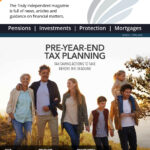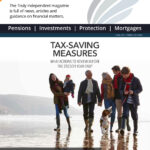A diversified portfolio is an effective tool for reducing risk and volatility without necessarily giving up returns.
When you start investing, or even if you are a sophisticated investor, one of the most important tools available is diversification. Whether the market is bullish or bearish, maintaining a diversified portfolio is essential to any long-term investment strategy.
Diversification allows an investor to spread risk between different kinds of investments (called ‘asset classes’) to potentially improve investment returns. This helps reduce the risk of the overall investments (referred to as a ‘portfolio’) underperforming or losing money.
With some careful investment planning and an understanding of how various asset classes work together, a properly diversified portfolio provides investors with an effective tool for reducing risk and volatility without necessarily giving up returns.
Investment decision process
Understanding investment risk and determining what level of risk you feel comfortable with before you invest is an important part of the investment decision process. Your potential returns available from different kinds of investment, and the risks involved, change over time as a result of economic, political and regulatory developments, as well as a host of other factors.
Your overall asset allocation needs to reflect: your future capital or income needs; the timescales before those capital sums are required or the level of income sought; and the amount of risk you can tolerate.
Investing is all about risk and return. Not only does asset allocation naturally spread risk, but it can also help you to boost your returns while maintaining, or even lowering, the level of risk of your portfolio. Most rational investors would prefer to maximise their returns, but every investor has their own individual attitude towards risk.
Investment characteristics
Determining what portion of your portfolio should be invested into each asset class is called ‘asset allocation’ and is the process of dividing your investment (s) between different assets. Portfolios can incorporate a wide range of different assets, all of which have their own characteristics, like cash, bonds, equities (shares in companies) and property.
The idea behind allocating your money between different assets is to spread risk through diversification and to understand these characteristics, and their implications on how a portfolio will perform in different conditions – the idea of not putting all your eggs in one basket.
Looking into the future
Investments can go down as well as up, and these ups and downs can depend on the assets you’re invested in and how the markets are performing. It’s a natural part of investing. If we could look into the future, there would be no need to diversify our investments. We could merely choose a date when we needed our money back, then select the investment that would provide the highest return to that date.
Moreover, the potential returns available from different kinds of investment, and the risks involved, change over time as a result of economic, political and regulatory developments, as well as a host of other factors. Diversification helps to address this uncertainty by combining a number of different investments.
Asset classes
When putting together a portfolio, there are a number of asset classes, or types of investments, that can be combined in different ways. The starting point is cash – and the aim of employing the other asset classes is to achieve a better return than could be achieved by leaving all of the investment on deposit.
Cash
The most common types of cash investments are bank and building society accounts and money market funds (investment vehicles which invest in securities, such as short-term bonds, to enable institutions and larger personal investors to invest cash for the short-term).
Money held in the bank is arguably more secure than any of the other asset classes, but it is also likely to provide the poorest return over the long term. Indeed, with inflation currently above the level of interest provided by many accounts, the real value of cash held on deposit is falling.
Your money could be eroded by the effects of inflation and tax. for example, if your account pays 5%, but inflation is running at 2%, you are only making 3% in real terms. If your savings are taxed, that return will be reduced even further.
Fixed Interest Securities
Fixed Interest Securities (also called ‘bonds’) are effectively IOUs issued by governments or companies. In return for your initial investment, the issuer pays a pre-agreed regular return (the ‘coupon’) for a fixed term, at the end of which it agrees to return your initial investment. Depending on the financial strength of the issuer, bonds can be very low or relatively high risk, and the level of interest paid varies accordingly, with higher-risk issuers needing to offer more attractive coupons to attract investment.
As long as the issuer is still solvent at the time the bond matures, investors get back the initial value of the bond. However, during the life of the bond, its price will fluctuate to take account of a number of factors, including:
- Interest rates – as cash is an alternative lower-risk investment, the value of government bonds is particularly affected by changes in interest rates. Rising base rates will tend to lead to lower government bond prices, and vice versa.
- Inflation expectations – the coupons paid by the majority of bonds do not change over time. Therefore, high inflation reduces the real value of future coupon payments, making bonds less attractive and driving their prices lower.
- Credit quality – the ability of the issuer to pay regular coupons and redeem the bonds at maturity is a key consideration for bond investors. higher-risk bonds such as corporate bonds are susceptible to changes in the perceived credit worthiness of the issuer.
Shares
Shares, or equities in companies, are regarded as riskier investments than bonds, but they also tend to produce superior returns over the long-term. They are riskier because, in the event of a company getting into financial difficulty, bond holders rank ahead of equity holders when the remaining cash is distributed.
However, their superior long-term returns come from the fact that, unlike a bond (which matures at the same price at which it was issued), share prices can rise dramatically as a company grows.
Returns from shares are made up of changes in the share price and, in some cases, dividends paid by the company to its investors. Share prices fluctuate constantly as a result of factors such as:
- Company profits – by buying shares, you are effectively investing in the future profitability of a company, so the operating outlook for the business is of paramount importance. Higher profits are likely to lead to a higher share price and/or increased dividends, whereas sustained losses could place the dividend or even the long-term viability of the business in jeopardy.
- Economic background – companies perform best in an environment of healthy economic growth, modest inflation and low interest rates. A poor outlook for growth could suggest waning demand for the company’s products or services. High inflation could impact companies in the form of increased input prices, although in some cases companies may be able to pass this on to consumers. Rising interest rates could put strain on companies that have borrowed heavily to grow the business
- Investor sentiment – as higher-risk assets, equities are susceptible to changes in investor sentiment. Deterioration in risk appetite normally sees share prices fall, while a turn to positive sentiment can see equity markets rise sharply
Property
In investment terms, property normally means commercial real estate – offices, warehouses, retail units and the like. Unlike the assets we have mentioned so far, properties are unique – only one fund can own a particular office building or shop.
The performance of these assets can sometimes be dominated by changes in the capital values. These unusually dramatic moves in capital value illustrate another of property’s key characteristics, namely its relative illiquidity compared to equities or bonds. Buying equities or bonds is normally a relatively quick and inexpensive process, but property investing involves considerable valuation and legal involvement.
The more normal state of affairs is for rental income to be the main driver of commercial property returns. Owners of property can enhance the income potential and capital value of their assets by undertaking refurbishment work or other improvements. Indeed, without such work, property can quickly become uncompetitive and run down. When managed properly, the relatively stable nature of property’s income return is key to its appeal for investors.
Diversification
Diversification helps to address uncertainty by combining a number of different investments. In order to maximise the performance potential of a diversified portfolio, managers actively change the mix of assets they hold to reflect the prevailing market conditions. These changes can be made at a number of levels, including the overall asset mix, the target markets within each asset class, and the risk profile of underlying funds within markets.
As a rule, an environment of positive or recovering economic growth and healthy risk appetite would be likely to prompt an increased weighting in equities and a lower exposure to bonds. Within these baskets of assets, the manager might also move into more aggressive portfolios when markets are doing well, and more cautious ones when conditions are more difficult. Geographical factors such as local economic growth, interest rates and the political background will also affect the weighting between the markets within equities and bonds.
In the underlying portfolios, managers will normally adopt a more defensive positioning when risk appetite is low. For example, in equities, they might have higher weightings in large companies operating in parts of the market that are less reliant on robust economic growth. Conversely, when risk appetite is abundant, underlying portfolios will tend to raise their exposure to more economically sensitive parts of the market and to smaller companies.
For further information please contact one of our financial advisers here









Follow us